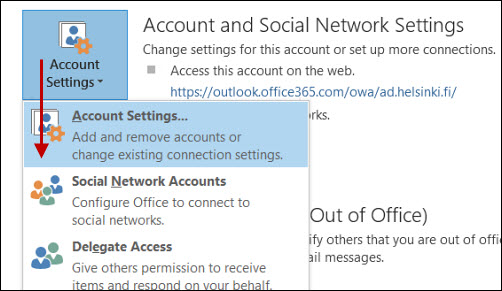
If you have questions regarding the Outlook Web App for Office 365 or encounter any problems while using it, please contact the ITS Customer Support Center.

Accessing the Outlook Web App for Office 365
OFFICE 365 OUTLOOK WEB ACCESS HOW TO
This page contains information on how to use OWA to read and send email messages, organize contacts, create tasks, and manage your calendar. This page also provides information on how to use OWA to manage global settings for your Office 365 account, such as email forwarding, automatic replies (vacation messages), and inbox rules (email filters). The Outlook Web App (OWA) lets you access your Office 365 mailbox using a web browser from any computer that has an Internet connection. The authentication prompt experience that users can expect is described in the following table.The Outlook Web App (OWA) lets you access your Office 365 mailbox using a web browser from any computer that has an Internet connection. If you're using identity federation in your hybrid environment. If their computer is or isn't domain joined.

Where they connect from (internal or external Internet connections). Users may receive multiple authentication prompts depending on: You can use the Get-OrganizationRelationship cmdlet to find the organization relationship name.Īfter you apply this setting, the users can continue using the current Outlook on the web URL to access their on-premises mailboxes. The trailing value /owa is required in the organization relationship, but users don't need to enter /owa in the URL. This means you don't need to specify the domain in the URL.Ĭonfigure the Outlook on the web redirect in the on-premises organization relationship: To do this, use the following syntax in the Exchange Management Shell in on-premises Exchange: Set-OrganizationRelationship -Identity -TargetOWAUrl For example, if the CNAME record that you created in Step 1 is, and the organization relationship name is Contoso Cloud, run the following command: Set-OrganizationRelationship -Identity "Contoso Cloud" -TargetOWAUrl In our example, the domain is used in the request (the cloudowa part is dropped). To eliminate these issues for users with cloud mailboxes, perform the following steps:Ĭreate a CNAME record in DNS (for example, ) that points to :īe sure to create this CNAME record in your internal and external (public) DNS, because users might connect from internal or external Internet connections. The endpoint causes users to see certificate mismatch warnings.

The endpoint requires the domain in the URL (to distinguish between Microsoft 365 Apps for business and consumer offerings). The endpoint for the cloud mailboxes is external (it's not in the domain that users expect).

The experience isn't seamless for the affected users.Ĭonfigure the TargetOWAUrl setting on the organization relationship: The issues with this option are: Tell the users the new URL (for example, ): The issues with this option are: To allow the affected users to connect to their mailboxes by using Outlook on the web, you have two options: On Monday after the move, those same users now get an error when they try to access their mailboxes by using that URL. On Friday before the move, the users accessed their on-premises mailboxes by using the URL. With that in mind, the Outlook on the web (formerly known as Outlook Web App) coexistence story is important.Ĭonsider the following scenario: a company uses a hybrid deployment to move some of their mailboxes from on-premises Exchange to Microsoft 365 or Office 365. Users need uninterrupted access to their mailboxes regardless of where or when their mailbox is moved. Learn how to configure a URL for Outlook on the web (Outlook Web App) for cloud mailbox users in a hybrid environment.Ī major concern for organizations that move to Microsoft 365 or Office 365 from on-premises Exchange is the user experience.


 0 kommentar(er)
0 kommentar(er)
